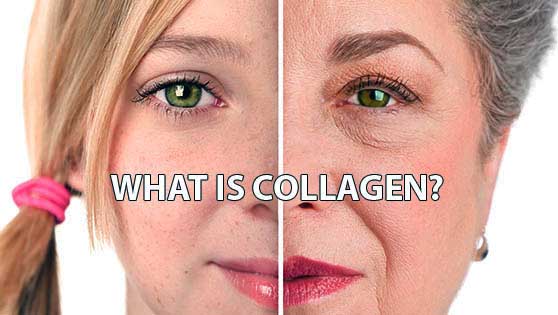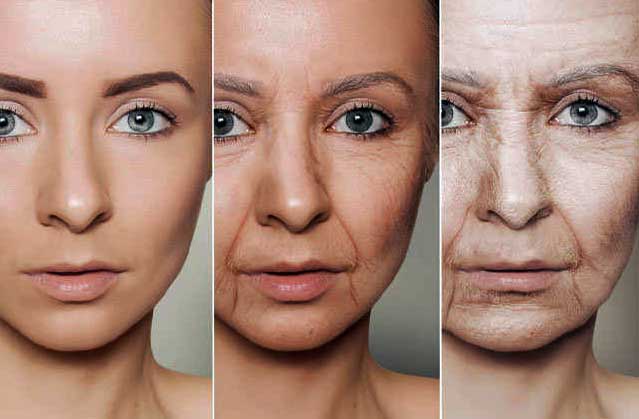Have you heard about advanced glycation end products, also known as AGEs? Age researchers sometimes use AGEs as useful markers and parameters to measure for the aging process. What happens is that cellular debris builds up. And age markers incorporate a measure of cumulative oxidative injury inside your body.
As you age hormones diminish and physiology changes. Sometimes there is accelerated aging. And research has linked high blood glucose that happens after a person eats lots of certain types of carbohydrates with hastening the aging process, cataracts, and other degenerative diseases of old age-premature old age. Check out the new book, Wheat Belly by Dr. William Davis, M.D. (Rodale Books.com).
Sometimes eating too much bread from processed wheat may lead to high blood sugar spikes for some people. Others react with sugar surges and spikes from other foods, including gluten. And wheat has gluten. Advanced glycation end products (AGE) is the name given to foods that cause high blood sugar spikes and contribute to the formation of cataracts, dementia, hardened arteries, and other degenerative diseases of aging. But the problem is these may happen before you’re old enough to expect it to happen when you have constant high blood sugar spikes from eating the wrong type of carbohydrates for you.
The older you get, the more AGEs can be found in your kidneys, eyes, liver, skin, and other organs. The issue is whether two or more decades of eating the wrong foods has aged you faster than you might be genetically programmed to age had you eaten other foods. You don’t want to end up with a bunch of glucose-protein molecules collectively called AGEs.
They disrupt your body from the organs to the bloodstream and arteries. AGEs accumulate, forming clumps of debris of the type that the body can’t get rid of by digestion or cleansing. So why choose the domino effect? You can check your fasting glucose to see whether it’s too high for what’s normal for your body. AGEs come from high blood sugars that complicate various types of health issues in your body.
You don’t want to develop type 2 diabetes or impaired kidney function. So think of it this way: The higher your blood sugar and the longer blood sugars remain high, the more AGE products will be building up, and may be followed by more organ damage. Your first step is to find out what your blood glucose fasting rate is, and whether that number is healthy for you.
That’s not the end of the problem. AGEs form even when your blood sugar is normal, but at a lower rate compared to when you have high blood sugar. How slowly do you want to age? For example AGE formation is what makes a 50-year old look age 50. Beware of the age-accelerating effects of high blood glucose. Maybe it’s time to try foods that don’t result in quick sugar spies, foods low on the Glycemic Index….like breads or crackers made from flax seeds, ground nuts, coconut flour, and other non-grain flours that are known not to cause a rapid rise in blood sugar levels.
Watch out for those wheat bagels, muffins, and focaccia breads because wheat, because of its particular ability to make the blood-glucose levels rise (at least in some people) could make you age faster. You could speculate who’d win out in a contest between wheat and ice cream to raise your blood sugar higher. But again, you need to measure your blood glucose levels at fasting levels and after you eat different foods. You could buy a blood glucose meter and strips for testing at a pharmacy. Or you could go into your doctor for blood tests of fasting levels and levels after eating various foods.
Just think, if you eat pasta made from the usual commercial wheat flour with a few slices of bread and some bread pudding for dessert, you can measure how high your blood glucose level rises perhaps all the way up to 150 to 250 mg/dl for about four hours after you eat. But you’d need a blood glucose meter. Then you could eat a cracker made from seeds and nuts or coconut flour and see what happens to your blood glucose level.
Or use pasta made from non-grains and measure that response. It’s common sense what to choose to eat: foods that don’t keep your blood sugar levels too high all the time because the high the blood sugar levels, the more insulin pours into your blood, and the faster you age from having too much insulin in your blood all the time and too much sugar resisting the insulin. Or you may have a problem of not enough insulin or insulin resistance.
In Sacramento, retiree from Sacramento’s Arden Arcade area, A.J.D. watched the Dr. Oz show last spring (April 21, 2011) on channel 58 Dish Satellite Network which focused on busting the myths of what causes aging. One of the truths focused on the question of sugar causing wrinkles. Check out the article on the Dr. Oz website, by Kristin Kirkpatrick, MS, RD, LD, “A spoonful of sugar: how many calories?”
Foods That May Wrinkle Your Face?

A.J.D. noted how wrinkled her face suddenly appeared after years of eating her daily pint of frozen yogurt which was sweetened with sugar. It didn’t matter that the sugar was organic, that she bought it at a natural foods store, or whether it was cane sugar, organic sugar, or evaporated cane juice. Sugar is sugar. And one of the truths exposed on one of the Dr. Oz shows back in April 2011 focused on how sugar causes wrinkles. What also may cause wrinkles in addition to excess sugar in the diet, Dr. Oz explained, was a sunburned face.
When you listen to women and men in Sacramento talk about what contributed most to their heavily wrinkled faces, and listen to nonsmoker, A.J.D., she explained, “I sunned my face daily during every summer, sometimes for hours to get a tan. And I did engage in eating that daily pint of frozen yogurt or mint chip ice cream.”
Her diet consists of a lifelong regimen of vegetables, fish, and fruit-no cake, very little bread, and only whole grains such as buckwheat soaked and eaten raw with blueberries for breakfast. But she wonders, “Was it the frequent sunburn on my face or the daily habit of ice cream with honey that caused all this early wrinkling that started at about age 35 and quickly increased after menopause?”
And she confessed, “and yes, you can see these wrinkles dramatically increased in the past 30 years,” (photo provided). The wrinkles for A.J.D. began to be obvious by the age of 34. She never smoked, though, which would have added to the situation besides living in Sacramento and frequently walking along San Francisco beaches on weekends-without sun screen. Currently she smoothes and plumps the wrinkles on her face with coconut oil.
Check out the articles, “Face facts: Too much sugar causes wrinkles,” Glycation: how sugar causes wrinkles | Simply Anti Aging, and “Sugar Causes Wrinkles.” Also see the articles, “Glycation: Another Good Reason to Avoid Refined Sugar,” and “Protecting Against Glycation And High Blood Sugar.”
How may sugar cause wrinkles?
What sugar does to cause wrinkles is that it breaks down the collagen and elastin in the face. According to the April 2011 Dr. Oz show, it was explained then that women should not exceed the maximum of 6 teaspoons of sugar daily. And for men, the maximum daily amount of sugar should not exceed 9 teaspoons of sugar.
Advanced Glycation End products (AGEs) is what happens when you eat excess sugar. If you buy those little cartons of yogurt, find out how many teaspoons of sugar are in them. Sometimes it has been said that those cartons of yogurt may contain around 7 teaspoons of sugar, unless the yogurt says unsweeted.
And with nondairy milks from nuts, sugars may be added. So check the box because sometimes plain nondairy milk substitutes may contain sweeteners, but no sugar or similar sweeteners would be added to a carton that reads ‘unsweetened.’ There’s a difference between plain and unsweetened.
Glycation that creates AGEs (advanced glycation end products) is the result of the bonding of a protein or lipid molecule with a sugar molecule, such as fructose or glucose, without the controlling action of an enzyme, according to the Wikipedia definition of glycation. All blood sugars are reducing molecules.
Glycation may happen either inside the body (endogenous glycation) or outside the body (exogenous glycation). Doctors may tell you that when sugars are added to protein or fats, then certain types of enzyme action starts in your body. There’s a name for this process: glycosylation.
The main point to understand is that glycation impairs the functioning of biomolecules. And glycosylation happens at specific sites on certain molecules. You might want to know that glycosylation is required in order for each of your molecules to function. If you go back to the Wikipedia website to look up these definitions, you’ll find a reference to further look at noting that a lot of early laboratory research work on fructose glycations used inaccurate assay techniques that led to drastic underestimation of the importance of fructose in glycation.
In plain language, for most shoppers, you need to understand that in one small serving of frozen yogurt, about a half cup, there may be up to 7 teaspoons of sugar. Think of how much sugar is in one glass of soda pop or in a slice of cake. And how much sugar is in a half cup of ice cream? Just read the ingredients label in grams of sugar.
Most people buying a pint of frozen yogurt or ice cream probably will finish the pint in one day. Not everyone eats the one serving listed on the container, which represents a half-cup or four ounces of frozen dessert sweetened with sugar.
Add to that the sugar portion of fruit, or adding sugar to coffee or tea, or other sweeteners that act like sugar in the body when it comes to wrinkling the face. If you can visualize the sugar breaking down the collagen and elastin in your face, you’ll get the big picture of what happens.
Additionally, the sugar changes the ratio of calcium to phosphorus in your body. And when the phosphorus levels rise and get out of balance with the calcium, your teeth can start to decay from the inside out.
That’s why some holistic dentists can tell when you’ve eaten candy, by a sudden rise in phosphorus levels, which unbalances that delicate ratio of calcium to phosphorus your body needs to fight tooth decay and infections. So yes, sugar can cause your face to wrinkle, and so can sunburn.
Overeating sugar causes wrinkles through the process called glycation, in which the sugar in your bloodstream attaches to proteins to form harmful new molecules called advanced glycation end products (or, appropriately, AGEs for short).
The more sugar you eat, the more AGEs you develop. Those AGE’s build up day after day for a lifetime. They pile high, and damage adjacent proteins in a domino-like fashion. Ask any dermatologist how sugar damages your skin.
Sugar breaks down collagen and elastin, the protein fibers that keep skin firm and elastic. Collagen is a protein that’s all over your body. When it is damaged, especially in your face, the collagen and elastin turns dry and brittle. Look at a wrinkled face that also sags.
The reason why it looks that way is because the collagen is brittle and diminishing. The look of aging, especially from a high sugar diet starts at about age 35 and increase rapidly after that, according to a study published in the British Journal of Dermatology. Some women at age 33 or 34 notice aging first by the fat sagging under their eyes causing bags.
How a high sugar diet changes you is that it changes the type of collagen that you were born with, making your skin less resistant to wrinkling.

There are three types of collagens in your skin. Let’s say you have a lot of type 3 collagen in your face. Glycation changes that type III collagen into the fragile type I collagen.
Your skin loses its elasticity and feels more like thin, wrinkled, aged skin. As you keep eating excess sugar, the AGEs put a stop on your body’s antioxidant producing enzymes. That sets you up to get more damage from sunburn quicker. And your face keeps on aging faster.
You can see the effects of what sugar does to people. For example, people with high blood sugar such as diabetics who aren’t controlling their blood sugar levels sometimes show signs of aging skin when much younger than people who eat a low or no added sugar diet.
Some diabetics may have up to 50 times the number of AGEs in their skin than those with normal blood sugar levels. But nutritionists now can explain that you may be able to build new collagen with products containing retinoids, if done safely under your dermatologist’s care. It’s possible to prevent too many AGEs from forming. All you have to do is stop the damage from sugar and sunburn.
It’s never too late to turn back the clock on sugar-wracked skin. One way is to build new collagen with products that contain retinoids — look for retinol in OTC serums and lotions or prescription creams such as Renova, Avage, and Differin. But then again, you may or may not be allergic or sensitive to those prescription creams. So talk with your health care team.
To keep this new collagen supple, you need to prevent more AGEs from forming by taking steps to minimize the damage sugar causes to your skin. Stop eating sugar and sweets. The grains you eat and the fruit also turn into glucose-sugar. Even this type of sugar fuels glycation. All you can do is limit added sugar. You can’t cut out vegetables, grains, and fruits totally or you’ll wind up with other health problems.
What you can do is cut back on sweets and eat more foods that don’t turn to sugar as soon as they’re digested. Keep sweets to less than 10% of your meals. The average American consumes 31 teaspoons per day of added sugar, or the equivalent of 465 calories. Just keep your sugar intake to less than 6 teaspoons for a woman and 9 teaspoons for a man-maximum.
You’re going to get sugar in processed foods such as ketchup and barbeque sauce. Don’t consume ready-to-eat foods with barley malt, corn syrup, dextrose, fruit juice concentrate, maltose, maple syrup, molasses, and turbinado sugar. They’ll damage your skin by breaking down the collagen and elastin just as much as if you added sugar to a pie or cake and ate the whole thing.
What’s most difficult for the average shopper to figure out is how many teaspoons of sugar each serving contains. That’s something nutrition students are given on an exam. All you can do if you’re in a hurry is look at nutrition label for sugars which are listed in grams under total carbohydrates, and then divide that number by 4 (each teaspoon of sugar is equal to 4 g) to convert it to teaspoons.
For example, if the sugars in that pint of frozen yogurt or ice cream are listed as 12 g, per half-cup serving, you’re eating 3 teaspoons of sugar per one half-cup serving. Only in most pints of ice cream, it’s not 12 g per half-cup.
It’s more like 21 g of sugars per half cup serving. And the box usually will tell you there are four servings of yogurt or ice cream per pint. That means 1/2 cup per person. But who actually eats only a half cup of frozen yogurt or ice cream? Not many, unless you’ve just had a huge meal right before you gulp the tiny dessert.
You could cut down facial wrinkling by avoiding excess high fructose corn syrup. Factories process the sugar in cornstarch to make fructose. But the problem there is that fructose, at least in excess, is believed to produce more AGEs than other types.
The reason fructose is put into foods is not because the companies what to preserve and extend your longevity and health that much. It’s because manufacturers want to give a longer life to foods on the shelf. That way, if the foods last longer on the shelf, there’s an opportunity to make more money.
More money is made because in the USA, high fructose corn syrup is cheaper and a lot sweeter than buying sugar. In the USA, you’ll find it in soda, fruit-flavored beverages, and snacks. It’s listed on the ingredients label. But in Mexico, sugar is cheaper. So sugar usually is put in soda pop.
What also helps to put a damper on AGE inhibitors is your B complex vitamins, such as B1 and B6, in tiny amounts. Doctors will tell you to use sunscreen. But then again, there are studies of sunscreen nano-particles being researched to see whether or not they contribute to neurodegenerative diseases such as Alzheimer’s. So the research continues. You need to find ways to protect your skin and and the same time get enough sunshine to produce vitamin D.
You could eat your antioxidants, such as foods containing vitamins C and E. Foods such as red bell peppers, walnuts, green tea, help, if the bell peppers don’t aggravate your tendency to arthritis from nightshade vegetables such as peppers, potatoes, and tomatoes. But antioxidants help to keep sugar from attaching to proteins. Look into research on what protects your skin from damages caused by sugar. And at least try to cut back on sweets.
In the morning. Forget the sugary cold cereals. Prepare foods the night before that can be warmed up in the morning for breakfast. In 2010, the American Heart Association recommended no more than 100 calories per day, or about 6 teaspoons of sugar for women and no more than 150 calories per day, or about 9 teaspoons a day for men.
The American Heart Association also made recommendations published in the medical journal, Circulation, linking excess sugars with metabolic abnormalities. Check out the studies linking excess sugar and increased risk of heart disease and diabetes (Malik VS, et al “Sugar-sweetened beverages and risk of metabolic syndrome and type 2 diabetes” Diabetes Care 2010; 33(11): 2477-2483).
Basically the recommendations for women are 6 teaspoons of sugar maximum. That’s 100 calories daily or 24 grams. You’d get that in a glass of fruit juice as natural sugars, but sugar still the same. For men, it’s 150 calories of sugar daily maximum which is 9 teaspoons of sugar or 36 grams.
Did you know that one cup of some types of bottled grape juice contains around 57 grams of sugar? And that’s with no added sugars, just the natural sugar in grape juice. And remember that natural sugars act the same way on the body as added white or other types of added sugars or sugar-like sweeteners. Many types of sugar sweetened cereals contain at least 4 teaspoons of sugar per serving. Maybe you should snack on those pulverized almonds instead of the candy bar.
Simple sugars occur naturally in fruits, vegetables and dairy products; these foods are nutritious staples of any good diet. Keep away from added simple sugars because they cause sugar cravings as well as make you eat more of other foods, adding more calories, and making you gain more weight.
Eating sugar causes you to become hungry quicker. Simple sugar consumption causes a spike in blood sugar and insulin followed by a crash.
That’s why when you have a donut and coffee for breakfast or a snack break, you’ll feel hungry soon after. Then you have a soda pop or a candy snack. And you crash. Then you feel hungry again and load up on the fries or burgers.
The point is sugar leaves you craving more. A week goes buy and you daydream of and crave that pint of ice cream or frozen yogurt, especially if it’s flavored with mint and chocolate along with sugar. Try freezing yogurt without added sugars instead. Since your taste buds get frozen to the point where you can’t taste the sugar as much and need more just so the dessert tastes sweet when frozen.
That’s why people add sugar to strawberries instead of adding cream, coconut milk, or unsweetened almond milk. You become addicted to sugar quickly. Give a baby sugar, and the dopamine in the baby’s brain addicts him to the source quickly. Then more hunger starts again.
What you can do to stop sugar from wrinkling your face is to eat foods that have some fiber in them. Try walnuts, one egg with two egg whites, or blueberries. Try unsweetened almond milk instead of that brown rice syrup sweetened milk substitutes that line the shelf of many Sacramento grocery stores and markets.
Also, you might take a look at the book, Food Rules: An Eater’s Manual, by Michael Pollan. Check out the 64 easy-to-follow principles. Best-selling author, Michael Pollan’s book is written with the clarity, concision and wit. This indispensable handbook lays out a set of straightforward, memorable rules for eating wisely, one per page accompanied by a concise explanation.



